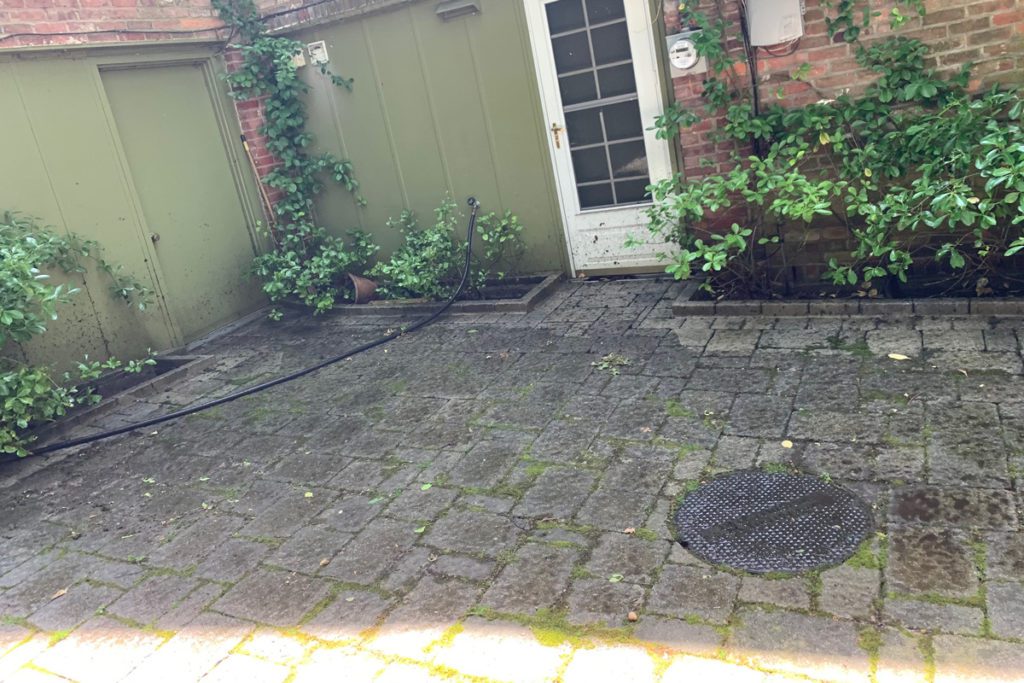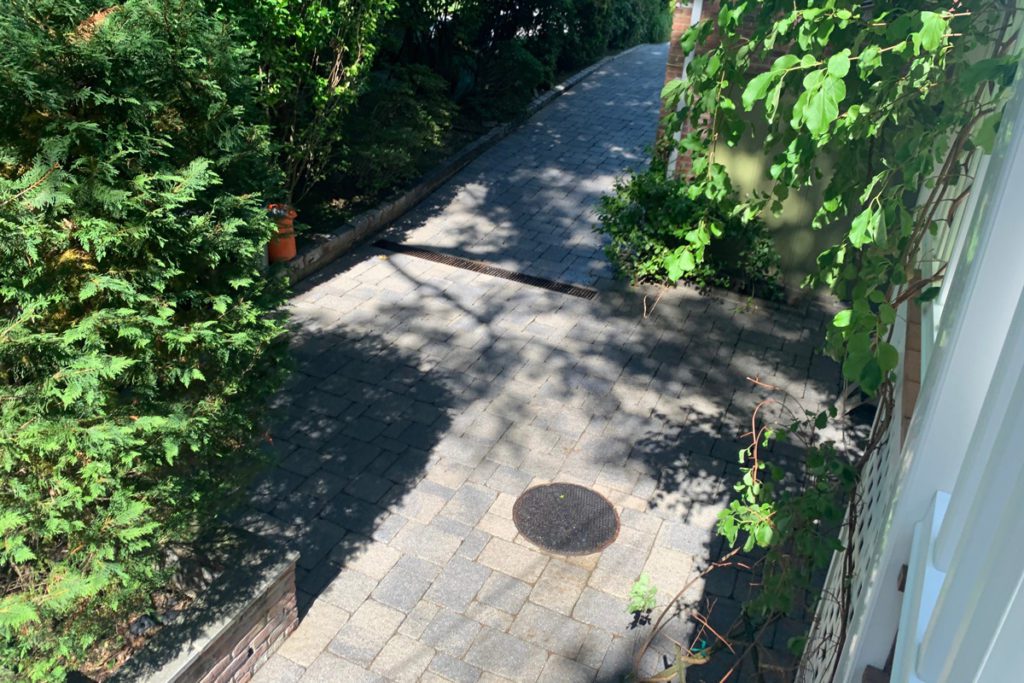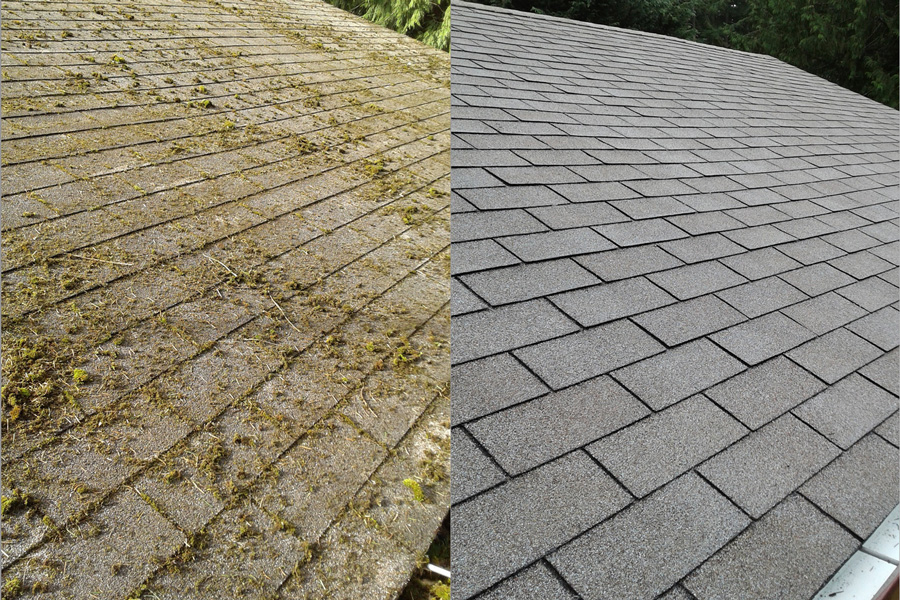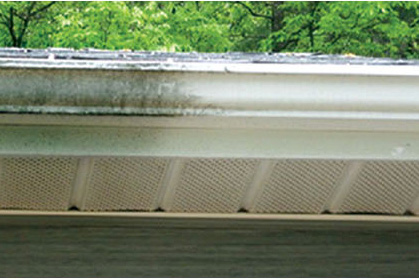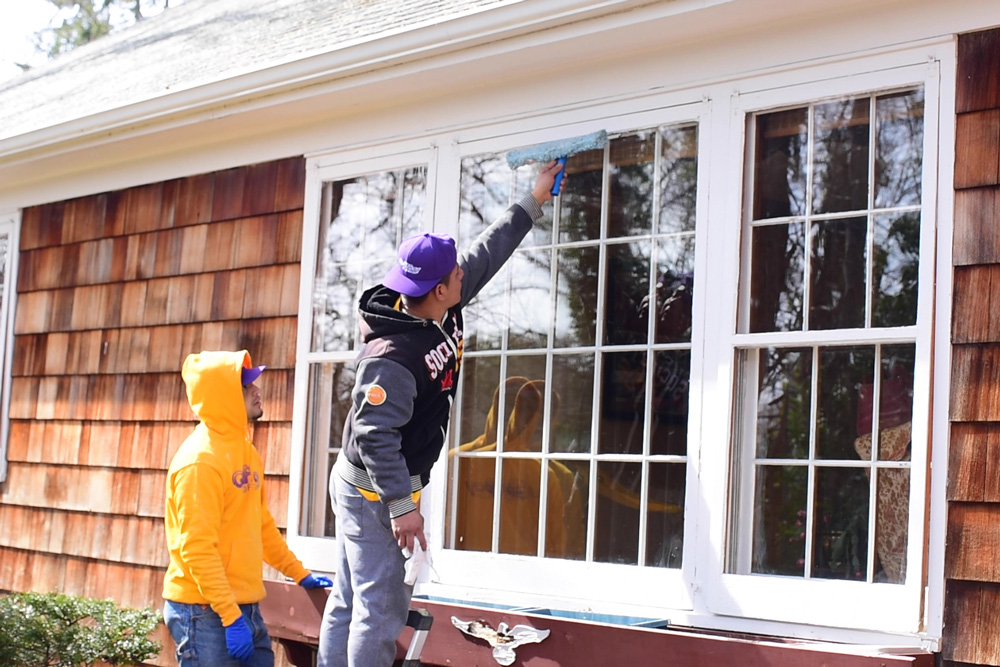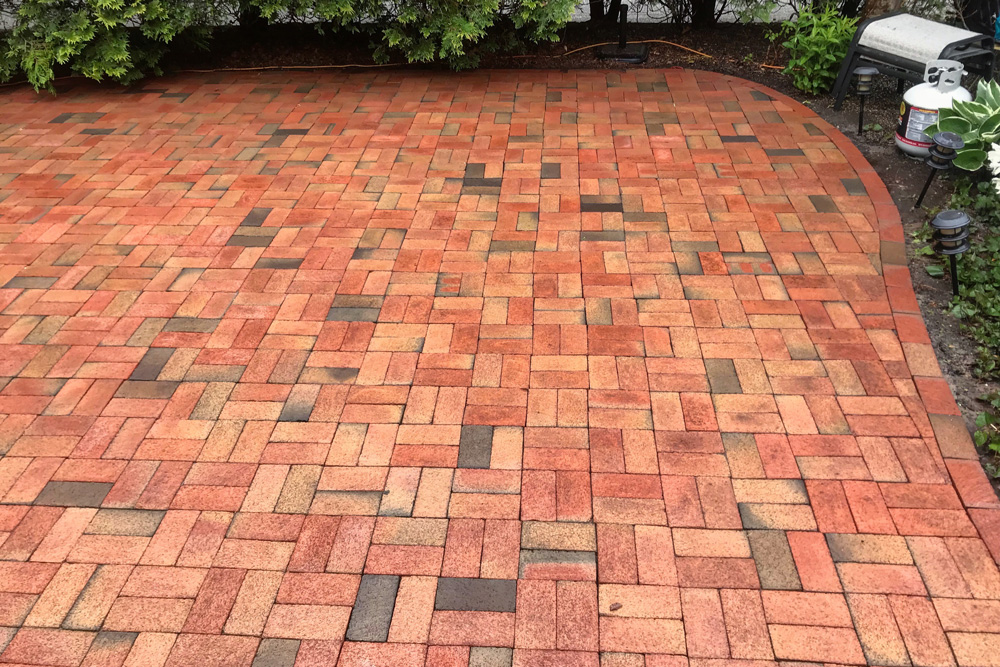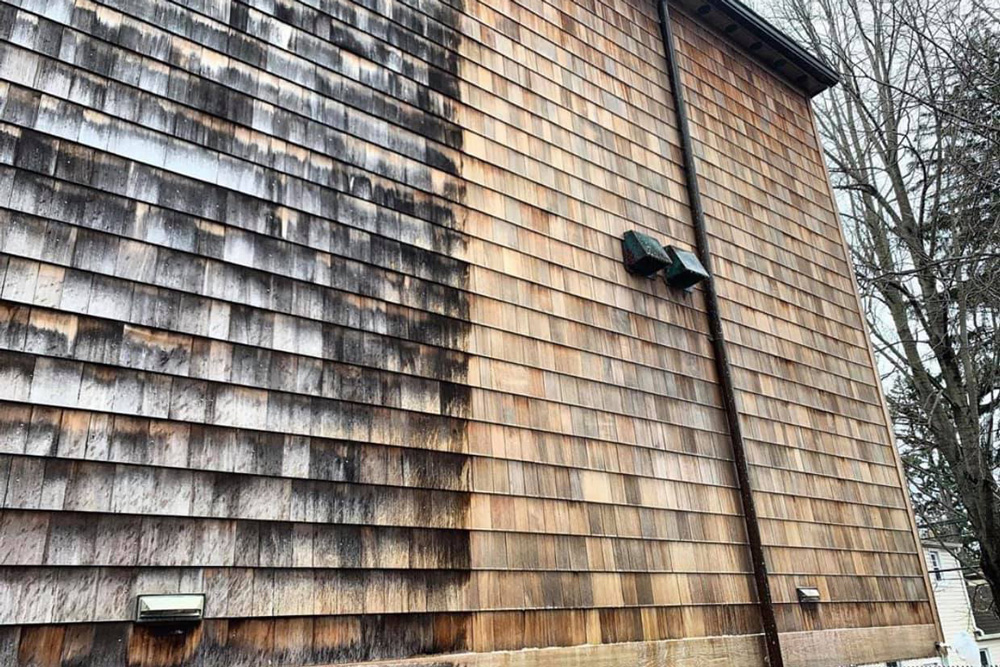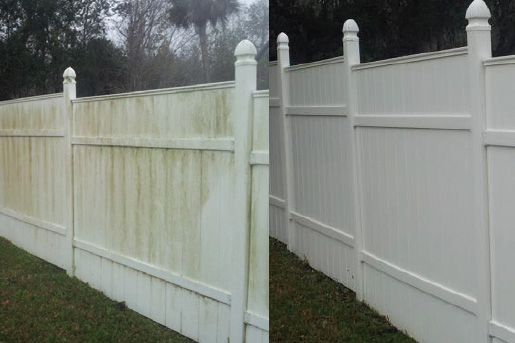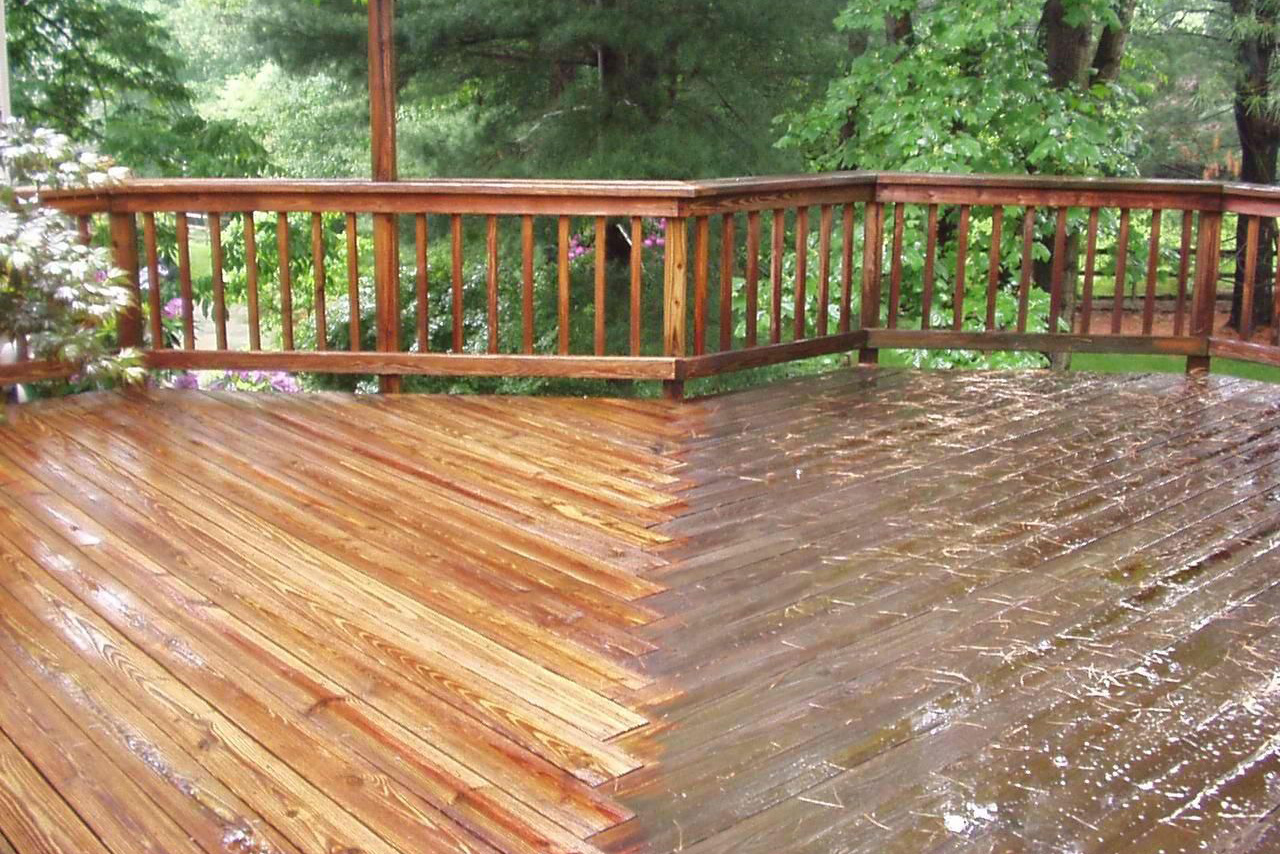
Clean, Restore & Protect Your Outdoor Pavers
Getting your brick, pavers, or natural stone regularly maintained will help to protect them from long-term damage. Washing and sealing these surfaces is essential to ensure they last longer, are easier to keep clean, and preserve their beauty.
Paver patios, driveways, and walkways collect an enormous amount of dirt due to the porous nature of the material. Concrete pavers also have a high concentration of lime, which causes dark algae staining, known as Gloeocapsa Magma. With all the spills, caked-on dirt, and organic growth, it takes the right equipment and approach to get these decorative surfaces cleaned properly. After cleaning, it’s recommended to add joint sand between the pavers to stabilize them and inhibit weed growth, as well as to reduce sand washout and prevent insect infestation. This is often followed by the application of either a matte or gloss sealer to keep everything protected and looking beautiful.
- Preserves the original color and finish of the pavers
- Protects pavers against cracks and chips caused by normal wear and tear over a long period
- Makes them easier to clean and repels permanent stains such as oil, grease, wine, etc.
- Prevents weed growth between the individual pavers, helping them keep a uniform and well-maintained look
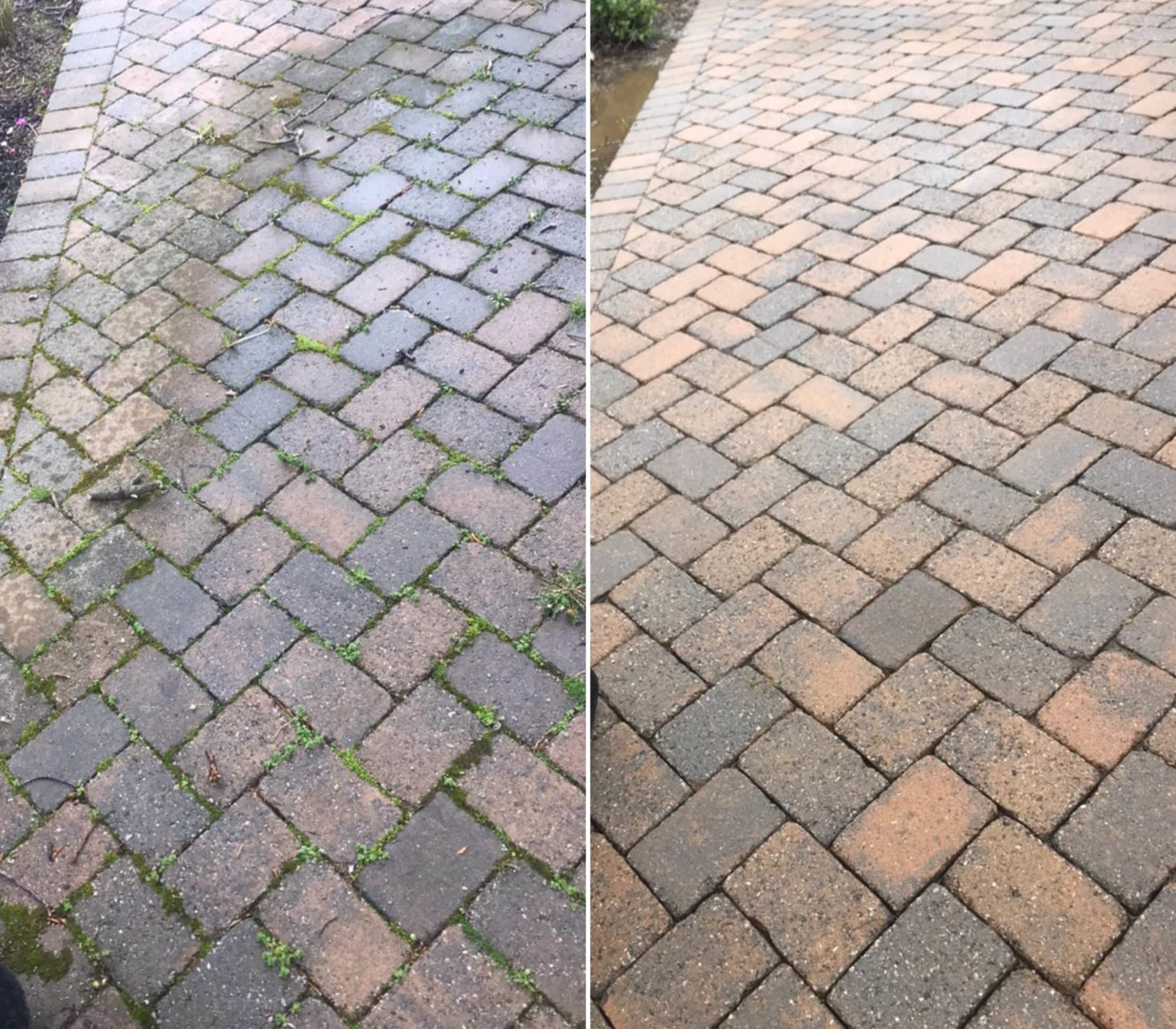

Renew Your Pavers & Stone.
Whether the surface is brand new or has been installed for years, preparation of the pavers before sealing is vital to help achieve successful, beautiful, long-lasting results. Ideally, once a surface is newly installed and a sealer is applied, a maintenance plan should be put in place to keep it looking beautiful for a lifetime.
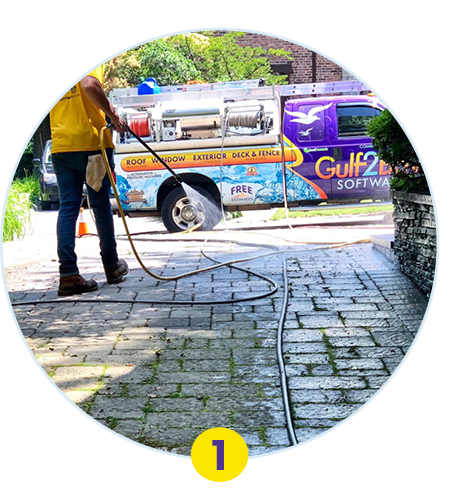
1. CLEAN
The first step is to give them a good wash. After removing and covering all furniture, plants, and equipment from the area, we make sure to sweep or blow away any loose soil and debris from the surface
Our technicians survey the area for visible staining to determine stain types and quality that may require special cleaning. We choose the appropriate spot cleaner to remove any unsightly blemishes on the surface. This is followed by an overall surface wash, employed with eco-friendly additives that eradicates any harmful bacteria, algae, and moss growth, leaving the area disinfected and clean.
Joint sand is a necessary component to aid in the interlocking system of the paver, keeping them more stabilized and level. However, not all sand is created equal. Common particles like silica or play sand are rounder in shape and have no structure, making them easy to dislodge under pressure. The joint sand we utilize is angular in shape, which creates stability in the joint and prevents the particles from moving around. This interlocking method is applied between the pavers to keep them in place and prevent any open space for weeds and insects to infiltrate.
Most people identify with Polymeric Joint Sand as the ultimate jointing sand because of the bond it creates between the pavers. We commonly use this type of sand when cleaning and revitalizing paving structures. Based on our experience, we recommend using JSS in conjunction with sealer to get the ultimate in joint stabilization.

2. SAND
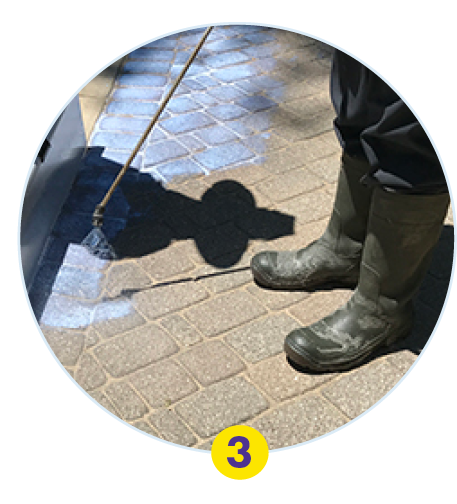
3. SEAL
Once the sand is applied and set, we coat the surface with either a film-forming or penetrating sealer. Selecting the right option is dependent on what the project owner is looking to achieve by sealing the surface.
Film-forming sealers form a breathable stain-resistant and UV-protected film on the surface, making it easier to clean and maintain. Most will provide a level of sheen from a matte to a semi-gloss, all the way to a heavier “wet look” with a variety of tone options. These types of sealers last anywhere from 2-4 years before the surface should be resealed.
Penetrating sealers permeate the surface to create a breathable non-film-forming barrier of protection. Some penetrating sealers contain silane/siloxane formulas, which offer a natural look without altering the surface enhancement or sheen level. They provide durable surface protection that includes superior water repellency and salt blocking. In areas more susceptible to staining, a fluorinated semi-penetrating sealer provides an extra layer of stain-blocking protection that won’t affect the appearance of your pavers or natural stone. Depending on environmental and site conditions, life expectancy for penetrating sealers is anywhere from 5-10 years before needing re-application.
Impact: The danger of moss lies in its ability to retain moisture. When water settles on a clean roof, it can air dry without lingering for too long. When moss grows abundantly, it acts as a heavy blanket on top of your roof that holds the water in place. As it grows thicker, it lifts and loosens the shingles, allowing water to leak through. This extra moisture can lead to mold, rot, and eventually, the decay of the roof’s framing.
Ideally, once a surface is newly installed and a sealer is applied, a maintenance plan should be put in place to keep it looking beautiful for a lifetime.
